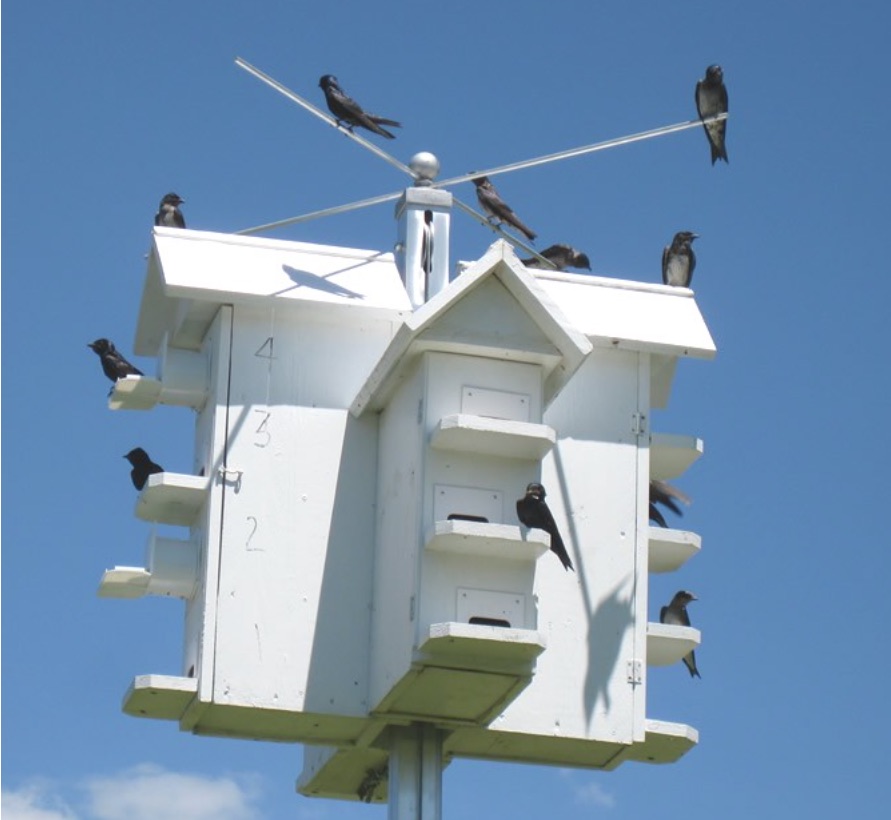
The cavity nesting birds at Iroquois NWR are doing well this year. The American Kestrels had three nests in the boxes that are provided for them. There may have been more nests in natural cavities but we did not find any of them. Of course many of you watched the kestrel cam and saw the progress of the nest box behind the Refuge Headquarters where three chicks fledged on June 7th in what we call the contaminate field where at least two chicks fledged. We didn’t find this nest soon enough to know how many eggs there were or how many hatched but we do know that two chicks did fledge. We also had a nest on Sour Springs Road that fledged five chicks so we know that there. There is a nest on Roberts Road were at least ten kestrels fledged on the Refuge this year.
Bluebirds are down this year compared to a record high last year of eighty fledglings. To date (July 24) only 41 bluebirds have successfully fledged. The reasons for this are that there were 17% fewer nesting attempts and 32% of the nests we did have failed due to weather, predation and unknown causes. There are still 13 eggs that have not hatched and 26 chicks in nests that have not fledged. If all of these successfully fledged we could reach a total of 80 fledged but we know we will lose some for various reasons.
Click here to become a member!
Click here to donate!
This is the first year that we have accurate records on purple martins. With our new martin houses, the reconditioning of our old houses and the installation of new poles and wenches we have been able to monitor all four of the houses on a regular basis. To date we have 32 nests with 152 eggs and 103 chicks. We banded 69 of these chicks and are not able to monitor the boxes any longer due to the danger of disturbing the chicks and causing them to prematurely fledge from the houses. We will get fairly accurate final numbers by examining the houses once all the chicks have fledged. The excitement has been high due to the fact that this is the first year in a long time we have had nesting martins at the Refuge Headquarters. The numbers are low but it is encouraging that martins are there and visible every day. Let’s hope that we get more birds next year and start to build a good healthy site.
With the launching of Purple Martin Days this year the banding of the martin chicks was a highlight. We banded chicks on July 2nd and had 17 people involved in this activity. On July 9th we banded again and there were 12 people involved. This is a very interesting and educational activity and we will try to improve it and involve more people next year.

